Snap! 4.0
Version of implementation Snap! of programming language ScratchA version of Snap! programming language.
Examples:
Hello, World! - Scratch (498):
Unlike Scratch, in Snap! each script must start with a “hat” block defining the condition upon which the script runs. “When green flag clicked” hat runs the script upon presentation start.
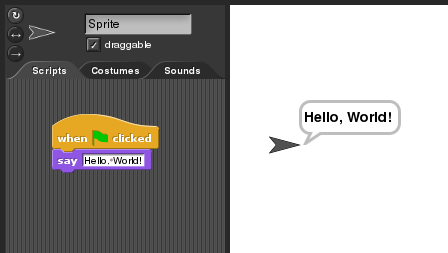
Hello, World! in Snap!
Factorial - Scratch (499):
This example shows iterative calculation of factorial. To output results in required multiline format a global list variable is used.
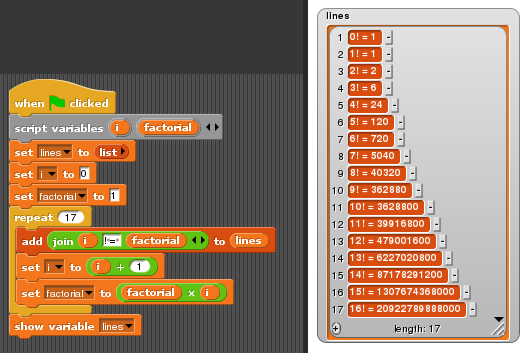
Factorial (iterative) example in Snap!
Factorial - Scratch (500):
This example uses recursive method of factorial calculation. Snap! allows to create user-defined blocks, in this case factorial block of type reporter (a block that returns a value, i.e. a function block). The newly defined block appears in the blocks palette immediately, and can be used when editing its own definition, thus allowing recursive calls.

Factorial (recursive) in Snap!
Fibonacci numbers - Scratch (501):
This example uses recursive calculation of Fibonacci numbers. To speed up calculations, newly found numbers are written to “cache” which is simply a global list.
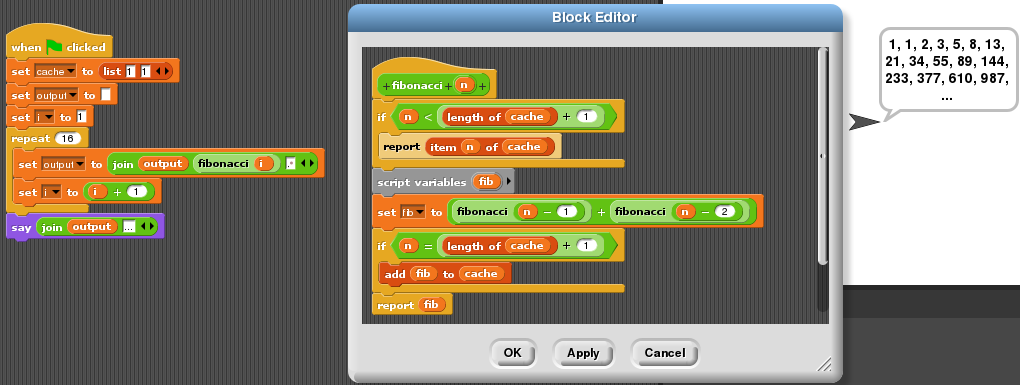
Fibonacci numbers (recursive) in Snap!
Quadratic equation - Scratch (502):
In Snap! block join conveniently allows to concatenate arbitrary number of arguments.
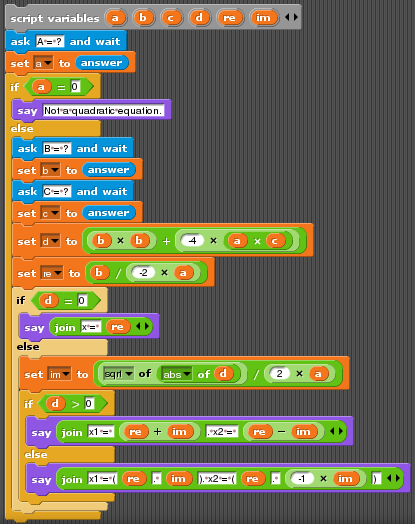
Quadratic equation in Snap!
CamelCase - Scratch (503):
Snap! has a slightly larger list of built-in blocks than Scratch; for example, blocks unicode of _ and unicode _ as letter are built-in. In this example these blocks are used to define blocks isLetter, toLower and toUpper, equivalent to functions of the same name in other languages.
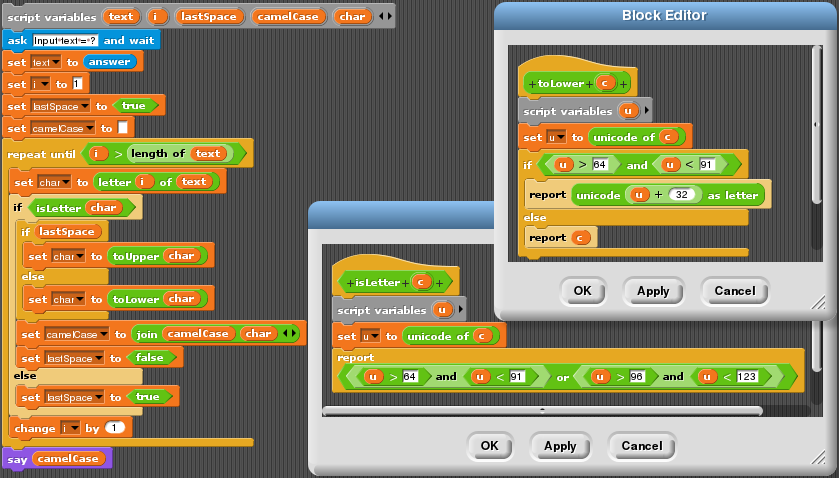
CamelCase in Snap!
Comments
]]>blog comments powered by Disqus
]]>